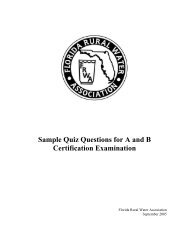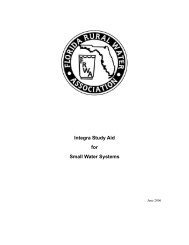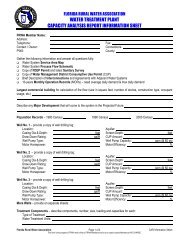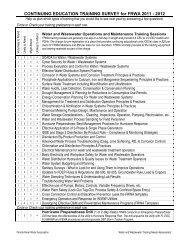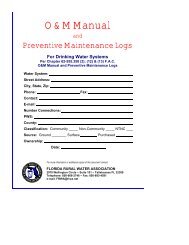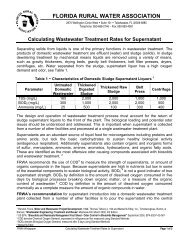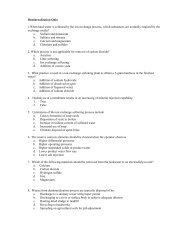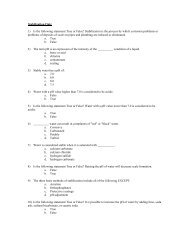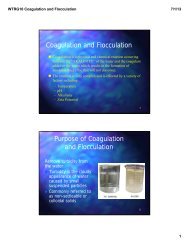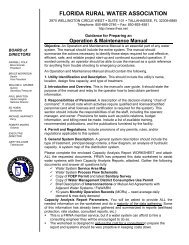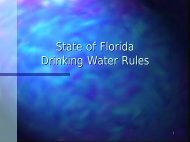The Taylor Tutorial - Florida Rural Water Association
The Taylor Tutorial - Florida Rural Water Association
The Taylor Tutorial - Florida Rural Water Association
Create successful ePaper yourself
Turn your PDF publications into a flip-book with our unique Google optimized e-Paper software.
9. Chemicals that lower pH• Gas chlorine – lowers Ph and strips Alkalinity• Sulfuric acid• Carbon dioxide – causes corrosion (used to recarbonate water and lower PH)• Sodium hydroxide• Alum• Ferric Chloride• Hydrofluosilicic• Soda Ash10. Chemicals Commonly Used in <strong>Water</strong> Treatment and <strong>The</strong>ir Application• Sodium Thiosulfate crystals – Neutralizes chlorine present in sample bottles usedfor bacteriological sample collection.• Hypochlorous Acid and Hypochlorite Ion – Reacts chemically and biologically tothe total residual chlorine remaining in water known as free available chlorineresidual.• Copper sulfate – kills algae• Copper sulfate pentahydrate (bluestone) –algicide Treat in autumn• Caustic Soda – (sodium hydroxide) Increases PH (can be used as a alternatemethod to soda ash)• Soda Ash – Increases PH (use with lime to remove non carbonate hardness)• Soda Ash - Increases alkalinity• Lime – Increases PH (used to remove carbonate hardness)• Lime - Increases alkalinity• Lime – Coagulant Aid• Sodium hydroxide – Lowers PH• Gas chlorine – lowers Ph and strips Alkalinity• Aluminum Sulfate (Alum) – Primary coagulant• Aluminum Sulfate (Alum) - Alum is the most commonly used coagulant• Ferrous Sulfate – Primary coagulant• Ferric Sulfate – Primary coagulant• Ferric Chloride – Primary coagulant• Sodium Aluminate – Coagulant Aid• Bentonite – Bentonite clay - Coagulant Aid• Clay – Coagulant Aid• Sodium Silicate – Coagulant Aid• Carbon dioxide – used for recarbonation of water to lower PH• Hydrogen sulfide H2S – Smells like rotton eggs – Eats up chlorine35



